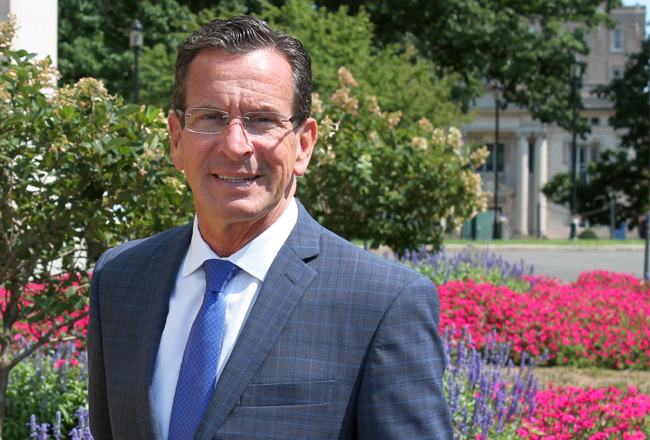To hear Connecticut State Colleges and Universities President Mark Ojakian tell it, consolidating the system”™s 12 community colleges into one accredited institution was the only realistic way of continuing to put, as the initiative”™s title declares, “Students First.”
“This is about, given where we find ourselves as a community college system, what do we do in terms of our financial position?” Ojakian said of the plan, which the CSCU”™s Board of Regents approved by a 12-0 vote, with one abstention on Dec. 14.
“We could raise tuition to untenable heights, or close campuses,” Ojakian said of the CSCU”™s other possible paths. “I have said that I am not going to be in charge of declaring winners and losers: ”˜I”™m closing two campuses, here they are, and the students that have been going there now have to go somewhere else,”™ which means that they are not going to go to school.”
He has also long opposed significant tuition hikes, Ojakian said, although he and the regents passed an increase in March, whereby tuition will rise at its universities and Charter Oak State College in New Britain by 4 percent and at its community colleges by 2.5 percent in both 2018 and 2019.

In making the case for consolidation to the board of regents, CSCU Chief Financial Officer Erika Steiner said that attempts to balance the system”™s budget through tuition and fee increases alone would have more than doubled the cost of tuition by 2022.
Playing into CSCU”™s favor when it comes to tuition, Ojakian said, is the success of a policy, now in place at seven of its community colleges, that allows out-of-state residents to pay in-state tuition at colleges that are geographically nearby. As a result, Asnuntuck Community College in Enfield has seen a 34 percent increase in students from Massachusetts, whose state border is less than a mile from its campus.
Western Connecticut State University in Danbury has also seen “a great increase in its number of New York students coming to Connecticut,” Ojakian said, although data confirming that was not immediately available. In October, the regents approved a plan to extend the in-state tuition policy at Western Connecticut to students from New Jersey.
“We need to be competitive with other states, because they”™re doing exactly what we”™re doing,” Ojakian said. “We have to go out and compete for a limited number of students by taking a thoughtful and creative approach.”
Even with the consolidation, which Ojakian estimates will save nearly $28 million a year in administrative costs, the system still faces a $13.2 million deficit in the next fiscal year. Provided enrollment remains strong, however, the following two fiscal years are projected to be profitable.
The consolidation, which must be approved by the New England Association of Schools and Colleges, continues to be a source of controversy among some students and faculty.
“The plan offers no real evidence or overall balance sheet to support claims of saving millions of dollars for a system that has been bled dry by continued state funding cuts,” said Elena Tapia, president of the Connecticut State University- American Association of University Professors, prior to the regents”™ vote. “Combined with the centralization of control for each college and threats to their accreditation, it is stunning to see the Board of Regents throwing caution to the wind and moving forward on implementing such a nebulous restructuring plan.”
The CSU-AAUP represents faculty, counselors, coaches, trainers and librarians at the four Connecticut state universities. That much of the consolidation”™s savings is predicated on the cutting of administrative jobs ”” about 190 by 2021 ”” is of particular concern to the association, Tapia said.
“Consolidations like the one being planned rarely result in long-term cost savings,” she said. “What”™s worse is it stands to jeopardize the very public higher education institutions tasked with educating Connecticut”™s future leaders. Instead of cuts and consolidation, the powers that be should turn their efforts to raising revenue for our state”™s public higher education system.”
Ojakian said he agreed with Tapia in principle, but fiscal realities preclude simply hoping for help from the state government in the near term. He said the CSCU will continue to lobby lawmakers alongside Connecticut”™s private universities, “which are facing the same dilemmas. These are issues that affect higher education as a whole in the state of Connecticut.”
Ojakian said he”™s also concerned about the recently enacted Republican tax legislation, which by doubling the standard deduction for tax filers would presumably cut the number of people who would itemize their charitable deductions. Some critics have maintained that would remove an incentive for taxpayers to make donations to colleges.
“There are pieces of the Republican tax plan that will have an impact on our students, student loans and student borrowing,” he said. “It”™s important (for us) to work with leaders on both sides of the aisle. Education is not a partisan issue.”
While Ojakian maintains that no faculty members will be cut as a result of consolidating, the same is not true of college presidents. Integrating administrative staff into one accredited institution with 12 campuses will result in one leader, “which we”™re calling vice chancellor,” he said, as well as the creation of three regional presidents who would report to that leader.
Norwalk Community College President David Levinson said he supported the Students First plan for both the cost savings and reduction in bureaucracy, but admitted that the prospect losing his job within the next two years was “difficult.” Still, Levinson expressed hope that he could “find another place within the system.”
“The (community college) presidents are free to do whatever they want to do,” Ojakian said. “There will be an open process to compete for those positions. They can apply for a regional president or the vice chancellor position, or to be a campus vice president.”
CSCU officials hope to receive accreditation for the consolidated institution from the New England Association of Schools and Colleges by June, “which will allow us to hit our initial implementation date of July 1, 2019,” said Ojakian.
Although he expressed confidence that the association would give its approval, the association”™s president has indicated the proposal will be closely examined to make sure that it will truly benefit students.
One objection ”” that Norwalk Community College and Naugatuck Valley Community College in Waterbury could lose their designations as Hispanic-serving institutions under the U.S. Department of Education”™s Title V program if consolidation is approved ”” has been in error, Ojakian said
Under Title V, a Hispanic-serving institution is defined as one that has an enrollment of undergraduate, full-time-equivalent students that is at least 25 percent Hispanic at the end of the award year immediately preceding the date of application for federal funds. Ojakian said the consolidation would result in “more than the 25 percent” Hispanic population required under Title V. “That additional money will be available to all 12 of our campuses.”
The CSCU president knew the Students First plan would come under withering criticism from some quarters. “Since I first announced this as a strategy back in April,” Ojakian said, “I”™ve made many efforts to communicate with the community at large through town halls, webinars and me and my team coming to the campuses to address any misinformation or misrepresentations that were out there.
“I continued to hear pretty much the same comments and criticisms, but it”™s important to note that this consolidation does not impact faculty at all. There is no workforce reduction when it comes to teaching and learning, which remains my priority.”





















